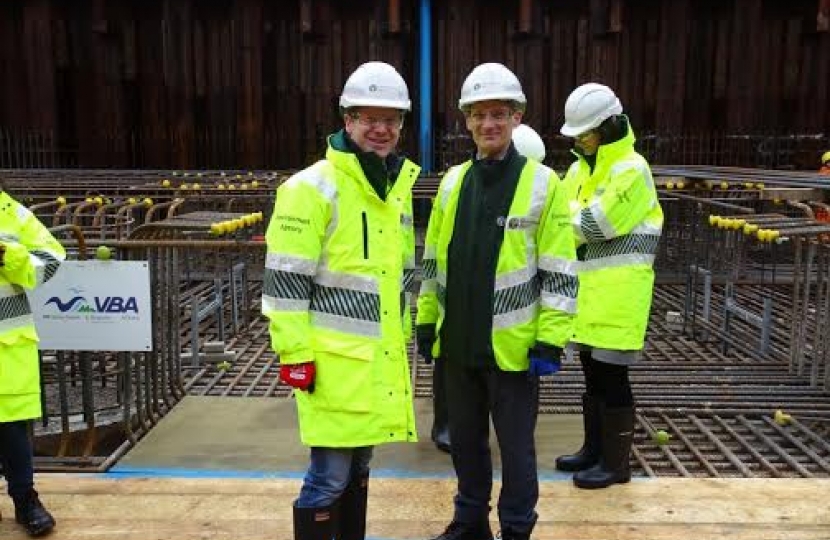
Here’s a question for you. Which port in the United Kingdom last year exported more agricultural products than anywhere else? Felixstowe? Southampton? Hull? Liverpool? None of these. It was our very own Ipswich.
I bet you did not know that – and you would not be alone. Our port is a hidden jewel in our local economic crown. Last year it handled 13% more than in 2015, which includes a 22% increase in exported cargo – a significant part of which was grain. In fact, Ipswich Port is now shipping more grain than at any point in its history.
It is a lineage that stretches a long way back. The archaeologists who are currently digging up the temporary carpark by the Paul’s building are scraping the old riverside where Redwald’s ships laid up 1,300 years ago, when Anglo-Saxon Ipswich was one of the most important ports in the country. Goods came and went across the quayside until a few decades ago, when the growth in the size of ships meant that port operations had to move down the estuary to the banks of Greenwich and Stoke. Spiritually, it is still the same port and it boasts a continued use as great as any other in the country, bar London and Dover.
Nonetheless, because the port employs relatively few people compared with the town’s economy as a whole (about 300) and because the port sits largely out of view from most of the town’s population, it is something we collectively do not celebrate enough. Given how it is leading the UK, perhaps it is time that we should.
Progress on Ipswich Flood Barrier
Meanwhile, we are in the process of protecting the old port – the waterfront – from the damaging effect of floods. Last Friday I visited the enormous hole that engineers have dug in the entrance to the New Cut, which from the outside looks like a modest palisade of sheet steel. It is anything but: once over the metal, there is a vast dug-out pit, braced with massive steel beams, with all the rebar preparations down below awaiting thousands of tons of concrete due to be poured in the weeks ahead.
What’s it all for? This is the conclusion of a £58m flood defence scheme, the last piece to be filled in an iron and stone horseshoe that runs from where Belstead Brook meets the Orwell, up Wherstead Road and the West Bank, right the round the top of the river basin at the New Cut, across the Prince Philip Lock Gates, to down the Cliff Quay entrance to the port. It is a massive undertaking, now complete apart from the flood barrier to be installed in the New Cut. Clearly the work that has been done so far is almost entirely permanent, but you cannot put a permanent barrier across a tidal river, and that is where the barrier comes in.
This is none other than our own version of the Thames Barrier: a steel shield that swivels into place should there be a risk of a tidal surge that will overtop the river defences in the town. When raised – which will only happen every few years – it will withstand huge pressures and keep the sea tide at bay.
The result is that we can protect not only the waterfront but also all the low-lying land in the town centre, of which there is much. Older residents will remember the floods of 1953; this barrier will ensure that we shall never again endure the damage and distress that those inundations brought with them.
Most importantly, it means that we can continue to develop land in the town centre, safe in the knowledge that the houses and jobs there are not under threat. That means that this barrier, whilst very expensive, will allow us to bring many times that value in investment into the town – investment that otherwise could not have come to the centre of Ipswich.
It may be a flood barrier but when you see it finished, know that this is a protector of our future prosperity.
Ben Gummer MP
